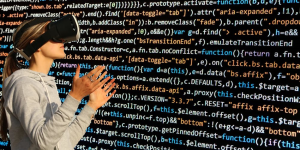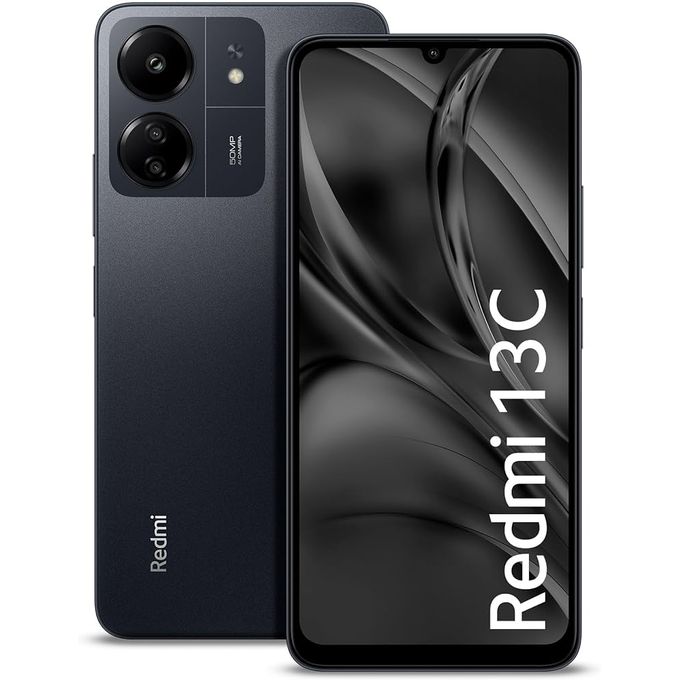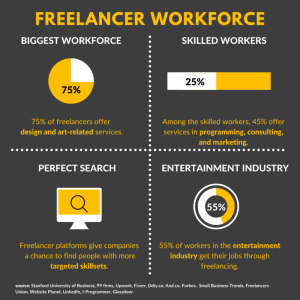Spatial Computing and Extended Reality

Imagine a world where the digital seamlessly intertwines with the physical, where information and experiences transcend the flat confines of your screen and inhabit the very space around you. This isn’t science fiction; it’s the burgeoning reality of spatial computing and its powerful manifestation in Extended Reality (XR). These technologies are poised to revolutionize how we interact with information, each other, and the world, ushering in an era of unprecedented immersion, collaboration, and understanding.
While often used interchangeably or in close conjunction, it’s crucial to understand the distinct yet symbiotic relationship between spatial computing and XR. Think of spatial computing as the overarching concept – the ability of machines to understand and interact with the physical world in three dimensions. It encompasses the software, hardware, and frameworks that allow digital content and services to be anchored to and responsive to real-world environments and human actions within them.
Extended Reality (XR), on the other hand, is the umbrella term that encompasses all immersive technologies that extend our reality by blending the physical and digital worlds. This includes:
- Virtual Reality (VR): Creating fully simulated, immersive environments that transport users to entirely new digital realms. Think of strapping on a headset and finding yourself on a distant planet, in a historical reenactment, or within an abstract artistic creation.
- Augmented Reality (AR): Overlaying digital information and virtual objects onto the real world, enhancing our perception of our surroundings. Popular examples include Pokémon Go, which superimposed digital creatures onto our physical landscapes, and industrial applications that provide workers with real-time data overlaid onto machinery.
- Mixed Reality (MR): Blending the real and virtual worlds in a way that allows digital and physical objects to coexist and interact in real-time. MR experiences often involve specialized headsets that enable users to manipulate virtual objects as if they were physically present in their environment.
Therefore, XR is a key output and user interface of spatial computing. Spatial computing provides the intelligence and capabilities to understand the environment and user interactions, while XR delivers these insights and experiences through immersive visual, auditory, and haptic feedback.
The Pillars of Spatial Computing:
Several core technologies underpin the capabilities of spatial computing:
-
Sensing and Perception: This involves a multitude of sensors that capture data about the physical environment and the user. Cameras, depth sensors, LiDAR (Light Detection and Ranging), accelerometers, gyroscopes, and microphones all contribute to building a comprehensive understanding of the space and the user’s presence and actions within it. Advanced computer vision and sensor fusion algorithms process this raw data to create a dynamic and accurate digital representation of the real world.
-
Spatial Mapping and Understanding: Once the environment is sensed, sophisticated algorithms create detailed 3D maps of the physical space. This includes understanding the layout of rooms, the presence and properties of objects, and even the movement and gestures of people. Semantic understanding goes a step further, allowing the system to recognize what different objects are and their potential functionalities. For instance, recognizing a table as a surface upon which a virtual object can be placed.
-
User Interaction and Interface: Spatial computing demands new forms of interaction beyond traditional keyboards and mice. This includes hand tracking and gesture recognition, allowing users to manipulate virtual objects naturally. Voice commands enable hands-free control. Eye tracking can be used for selection and to understand user focus. Haptic feedback, delivered through controllers or specialized gloves, provides a sense of touch and physicality within the digital environment, enhancing immersion and precision. Brain-computer interfaces (BCIs), while still in early stages, hold immense potential for direct neural interaction with spatial computing systems.
-
Artificial Intelligence (AI) and Machine Learning (ML): AI and ML are the crucial engines that drive intelligence and adaptability in spatial computing. They are used for:
- Object recognition and scene understanding: Enabling the system to identify and interpret elements within the environment.
- Predictive modeling: Anticipating user needs and adapting the experience accordingly.
- Personalization: Tailoring spatial experiences to individual users based on their preferences and past interactions.
- Intelligent agents: Creating virtual assistants and entities that can interact with users and the environment in meaningful ways.
-
Networking and Collaboration: Spatial computing is not confined to individual experiences. Robust networking infrastructure allows multiple users to share and interact within the same virtual or augmented space, regardless of their physical location. This opens up powerful possibilities for remote collaboration, shared learning experiences, and social interaction in immersive environments.
The Transformative Applications of Spatial Computing and XR:
The potential applications of spatial computing and XR are vast and span across numerous industries, promising to reshape how we live, work, and play:
1. Education and Training:
- Immersive Learning: VR field trips to historical sites, anatomical dissections without physical cadavers, and simulations of complex scientific processes can significantly enhance engagement and understanding.
- Hands-on Training: AR and VR provide safe and cost-effective environments for training in high-risk professions like surgery, aviation, and emergency response, allowing trainees to practice critical skills in realistic scenarios without real-world consequences.
- Personalized Learning: Spatial computing can adapt educational content and delivery based on individual student needs and learning styles, creating more effective and engaging learning experiences.
2. Healthcare:
- Surgical Training and Planning: VR allows surgeons to practice complex procedures in a virtual environment, improving precision and reducing errors. AR can overlay critical patient data onto the surgeon’s view during operations.
- Patient Rehabilitation: VR can create engaging and motivating environments for physical and occupational therapy, aiding in recovery from injuries and illnesses.
- Mental Health Treatment: VR offers immersive therapies for conditions like PTSD, phobias, and anxiety, providing safe and controlled environments for exposure therapy and relaxation techniques.
- Remote Patient Monitoring and Assistance: AR can guide patients through medication regimens or rehabilitation exercises at home, while spatial computing enables remote consultations with healthcare professionals.
3. Manufacturing and Engineering:
- Design and Prototyping: VR allows engineers and designers to visualize and interact with 3D models of products before physical prototypes are built, accelerating the design process and reducing costs.
- Assembly and Maintenance: AR can provide step-by-step instructions and real-time data overlays onto machinery, guiding workers through complex assembly or maintenance tasks, improving efficiency and reducing errors.
- Remote Collaboration: MR enables engineers and technicians in different locations to collaborate on designs and troubleshoot issues in a shared virtual environment.
4. Retail and E-commerce:
- Virtual Try-ons: AR allows customers to virtually try on clothing, accessories, and makeup before purchasing, improving online shopping experiences and reducing returns.
- Immersive Product Demonstrations: VR can create interactive product showcases, allowing customers to explore products in detail from the comfort of their homes.
- Enhanced In-store Experiences: AR can overlay product information, reviews, and personalized recommendations onto physical products in stores, enriching the shopping experience.
5. Entertainment and Gaming:
- Highly Immersive Gaming: VR offers unparalleled levels of immersion in gaming, transporting players into captivating virtual worlds.
- Interactive Storytelling: XR can blend digital narratives with the real world, creating unique and engaging storytelling experiences.
- Virtual Events and Performances: VR allows people to attend concerts, sporting events, and theatrical performances remotely, creating a sense of presence and shared experience.
- Location-Based Entertainment: AR and VR are powering new forms of location-based entertainment, such as immersive escape rooms and interactive museum exhibits.
6. Architecture and Real Estate:
- Virtual Walkthroughs: VR allows potential buyers or renters to experience properties remotely, providing a realistic sense of space and layout.
- Design Visualization: Architects can use VR to present their designs to clients in an immersive way, allowing for better understanding and feedback.
- Construction Planning and Management: AR can overlay building plans onto construction sites, aiding in visualization and ensuring accuracy.
7. Collaboration and Communication:
- Virtual Meeting Spaces: MR can create shared virtual workspaces where remote teams can collaborate more effectively, interacting with 3D models and data as if they were in the same room.
- Remote Assistance: AR can enable experts to remotely guide field technicians through complex tasks by overlaying instructions and annotations onto their view.
- Social Connection: VR platforms are evolving to offer more social and interactive experiences, allowing people to connect and interact in shared virtual environments.
Challenges and the Path Forward:
Despite its immense potential, the widespread adoption of spatial computing and XR faces several challenges:
- Hardware Limitations: Current XR hardware can be bulky, expensive, and have limitations in terms of field of view, resolution, and comfort. Technological advancements are continuously addressing these issues.
- Software and Content Ecosystem: The development of compelling and diverse spatial applications and content is crucial for driving adoption. Robust development tools and platforms are needed to facilitate this growth.
- User Experience and Interface Design: Designing intuitive and natural user interfaces for spatial environments is a complex challenge. Research into optimal interaction methods, minimizing motion sickness, and ensuring accessibility is ongoing.
- Privacy and Security Concerns: As spatial computing systems collect more data about our physical environments and interactions, addressing privacy and security concerns is paramount.
- Ethical Considerations: The increasing integration of digital content into our physical reality raises ethical questions about the potential for manipulation, addiction, and the blurring of lines between the real and virtual.
Despite these challenges, the trajectory of spatial computing and XR is undeniably upward. Advancements in sensor technology, processing power, display technology, and AI are rapidly pushing the boundaries of what’s possible. As hardware becomes more affordable and user-friendly, and as a rich ecosystem of software and content emerges, we can expect to see these technologies become increasingly integrated into our daily lives.
The Future is Spatial:
Spatial computing and extended reality represent a fundamental shift in how we interact with technology. They move beyond the limitations of flat screens and create immersive, intuitive, and context-aware experiences that have the potential to transform industries and enrich our lives in profound ways. As these technologies continue to evolve, we stand on the cusp of a future where the digital and physical worlds are seamlessly interwoven, unlocking new possibilities for learning, working, playing, and connecting with each other and the world around us. The journey beyond the screen has just begun, and the destination promises a reality far more engaging, informative, and interactive than we can fully imagine today.











Post Comment